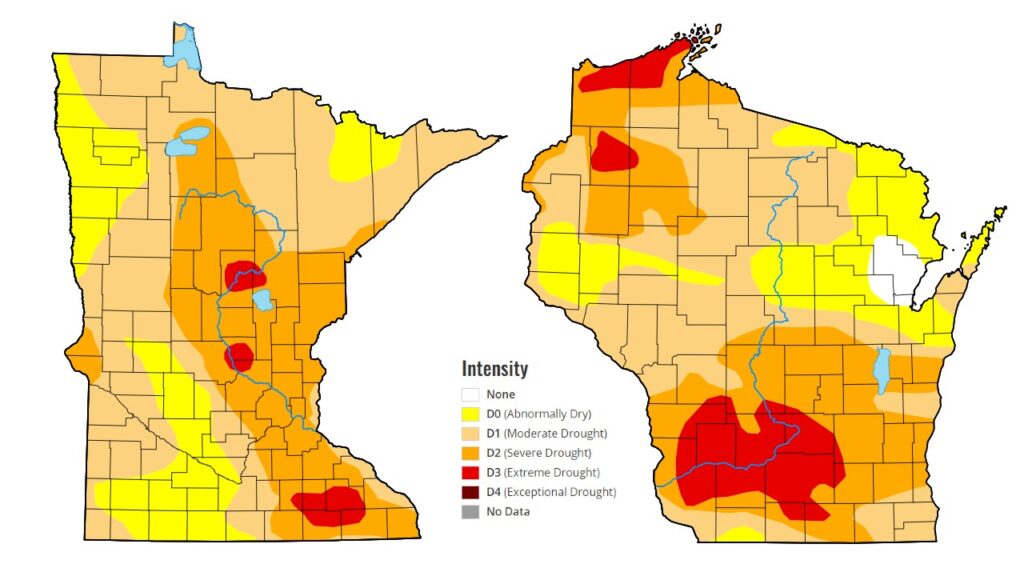Areas experiencing extreme drought increase slightly across Minnesota, decrease in Wisconsin
The percentage of areas experiencing severe and extreme drought expanded slightly since last week across Minnesota, according to the latest report from the U.S. Drought Monitor.
Information released Thursday morning shows extreme drought levels are now affecting nearly 2.9% of the state, up from roughly 1.5% last week. Meanwhile, severe drought levels are now recorded throughout 33.6% of Minnesota, an increase from about 29.7% last week.
Extreme drought levels are reported north of Lake Mille Lacs, St. Cloud, and across much of Olmsted, Dodge, Mower, Fillmore and Steele Counties in extreme southeast Minnesota.
Thursday’s report comes after storms brought some much-needed rainfall moved across the Midwest last week. The deadline to send in precipitation totals for the weekly drought report is 7 a.m. Tuesday — two full days before the information is released to the public.
Across the border in Wisconsin, extreme drought is still along the south shore of Lake Superior, covering a large part of Washburn County and extending into Sawyer County. A large swath of the southwest part of the state is also in an extreme drought, bringing the total land percentage to just over 12.1%. That’s down slightly from last week’s percentage of 12.7%.
However, there is a slight improvement in Wisconsin — since last week, a small section of the northeast part of the state (2.06%) is not experiencing any kind of dryness, including parts of Marinette, Brown, Shawano, Menominee and Oconto Counties.
At this time last year, there were no areas across either state experiencing extreme drought.
The latest forecast from Minnesota’s Weather Authority shows rain is forecast this weekend after hot and humid conditions Thursday and another warm day on Friday. Temperatures are expected to be below average for the start of the next work week. CLICK HERE for the interactive radar.
